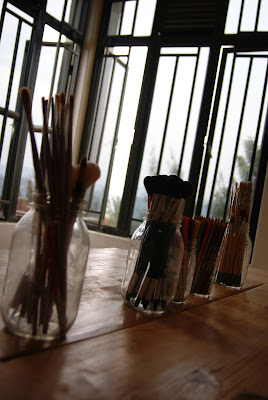Rwanda is a beautiful country in many ways. Its landscape is
awe-inspiring. It is probably one of the cleanest places we have ever been. It
is making advances in health that far outpace most African countries. However,
worldwide it is most well-known for the horrible atrocities that took place
during the 100-day genocide of 1994.
Next week marks the 19th anniversary of the start
of the genocide. April 7th is the National Day of Mourning, and the
following week is Remembrance Week. For Rwandans, this idea of remembering, the necessity of not
forgetting, is incredibly important. On genocide memorials throughout the
country, of which there are many, the slogan ‘Never Again’ appears repeatedly.
And with good reason.
As Westerners, we have become incredibly familiar with the
1994 genocide. We have seen documentaries and Hollywood biopics about it;
it is the first thing that comes to mind whenever Rwanda is mentioned. However,
it was not, in fact, the first genocide in Rwandan history. Or even the first one to take place in the 20th century.
The Hutu-Tutsi conflict has had incredibly high death tolls.
Between 1959 and 1961, 100,000 Tutsis were massacred by Hutus. In 1972 in
neighboring Burundi, somewhere between 80,000 and 200,000 Hutus were
slaughtered by Tutsis in 1972. And in 1994, the dead numbered between 800,000
and a million Tutsis, killed at the hands of Hutus. The violence has been
systemic, retaliatory, and brutal, with surprisingly short intervals between
genocidal outbreaks. Today, the tribal clash continues in the Democratic
Republic of the Congo.
With so few years between these genocides, in a culture
where tribal heritage is important, and where the clash continues in
neighboring countries, it is no wonder that the need to keep ‘Remembrance’
alive and well is so vital in the Rwandan psyche. It is seen in the presence of
numerous genocide memorials across the country, in the respect and solemnity of
Remembrance Week.
Though, of the practicalities of some genocide memorials in
general (I am including my experience of Cambodia, as well), I have mixed feelings,
particularly in relation to the use of the skulls of victims in these memorials.
I understand that they bring home the reality of the atrocity, but do these
victims, even if their identity is unknown, not deserve a proper burial? Do we
need to see mass graves full of bones and clothing in order to understand, or
should these people be put to rest? Why is it that a map made of skulls is
considered disrespectful and dismantled, as happened in Cambodia, but shelves,
temples, churches and mass graves full of skulls and bones is acceptable? Are
pictures of the victims, something with a face and a name, a remnant of life,
not a more vital reminder than nameless, faceless skulls?
But, I digress. Whichever side of that debate you fall on, there is
no denying the importance of honoring the victims, as well as the importance of
remembering in order to not allow these things to happen again. Thanks to the
Rwandans’ efforts in this realm, the country today is a remarkably safe place;
its future is bright, its people one unified group.











































